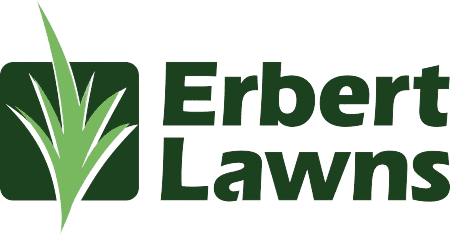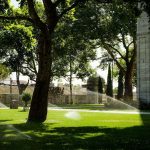A lush, green lawn is a source of pride for many homeowners and a beautiful feature of any property. Achieving and maintaining such a lawn requires more than just regular watering and mowing—it requires proper fertilization. Fertilizers provide essential nutrients that grass needs to grow healthy and resilient. This guide will cover the types of fertilizers available, recommended application schedules, and how to meet the specific nutrient requirements of different grass types. At Erbert Lawns, we understand that a lush, green lawn is the crown jewel of any home. With our expertise, you can ensure that your lawn receives the best care possible, promoting robust growth and vibrant health.
Key Takeaways
- Right Type, Right Time: Match the fertilizer type and application time to your grass’s specific needs.
- Monitor and Adjust: Keep an eye on your lawn’s health and adjust your approach as needed.
- Professional Insight: Consult with a lawn care expert to fine-tune your fertilization strategy.
Understanding Lawn Fertilizers
Lawn fertilizers are made up of three primary nutrients, known as macronutrients: nitrogen (N), phosphorus (P), and potassium (K). These nutrients play specific roles:
- Nitrogen (N): Promotes lush, green growth and overall vitality.
- Phosphorus (P): Supports root development and helps establish new grass.
- Potassium (K): Enhances disease resistance and strengthens the grass against environmental stress.
Each fertilizer bag has an N-P-K ratio that indicates the percentage of each nutrient. For example, a fertilizer labeled 10-10-10 contains 10% nitrogen, 10% phosphorus, and 10% potassium.
Types of Fertilizers
-
Synthetic Fertilizers
- Advantages: Fast-acting and highly effective, synthetic fertilizers deliver nutrients quickly to your lawn.
- Drawbacks: They can leach into waterways if over-applied and may require more frequent applications.
-
Organic and Sustainable Fertilizers
- Advantages: Organic and sustainable fertilizer made from natural materials like compost, manure, or bone meal, these are eco-friendly and improve soil health over time.
- Drawbacks: They work more slowly and may be less potent than synthetic options.
-
Slow-Release Fertilizers
- Advantages: These release nutrients gradually, reducing the risk of over-fertilization and requiring fewer applications.
- Drawbacks: They may be more expensive than quick-release options.
-
Weed-and-Feed Fertilizers
- Advantages: These combine nutrients with weed control, offering a two-in-one solution for lawn care.
- Drawbacks: Overuse can harm desirable plants or grass.
Application Schedules
The frequency and timing of fertilization depend on your grass type and local climate. In general:
-
Cool-Season Grasses (e.g., Kentucky Bluegrass, Fescue, Ryegrass)
- Best Fertilization Times: Early spring and early fall.
- Frequency: 2-4 times per year.
- Focus: Use high-nitrogen fertilizers in the spring to promote green growth and balanced formulas in the fall to prepare the grass for winter.
-
Warm-Season Grasses (e.g., Bermuda, Zoysia, St. Augustine)
- Best Fertilization Times: Late spring through early summer.
- Frequency: 3-5 times per year.
- Focus: Apply nitrogen-rich fertilizers during the active growing season and a balanced or slow-release formula during mid-season maintenance.
-
General Tips for Application Timing
- Avoid fertilizing during extreme heat or drought conditions.
- Always water your lawn after fertilization to help nutrients penetrate the soil and reduce the risk of leaf burn.
Nutrient Requirements by Grass Type
Choosing each grass type has specific nutrient requirements. Here’s a breakdown:
-
Kentucky Bluegrass
- Nitrogen: 2-4 pounds per 1,000 square feet annually.
- Phosphorus & Potassium: Use a balanced fertilizer unless a soil test suggests otherwise.
- Tips: Fertilize lightly in spring and more heavily in fall for robust winter survival.
-
Bermuda Grass
- Nitrogen: 4-6 pounds per 1,000 square feet annually.
- Phosphorus & Potassium: Focus on phosphorus during the establishment phase.
- Tips: Fertilize monthly during peak growth in summer.
-
Fescue
- Nitrogen: 2-3 pounds per 1,000 square feet annually.
- Phosphorus & Potassium: Use a balanced fertilizer for steady growth.
- Tips: Fall fertilization is critical for strong root development.
-
Zoysia Grass
- Nitrogen: 2-4 pounds per 1,000 square feet annually.
- Phosphorus & Potassium: Minimal phosphorus is needed unless soil tests indicate deficiency.
- Tips: Fertilize every 6-8 weeks during the growing season.
-
Augustine Grass
- Nitrogen: 2-4 pounds per 1,000 square feet annually.
- Phosphorus & Potassium: Balanced fertilizers help maintain resilience against pests.
- Tips: Avoid heavy fertilization in shady areas, as this can encourage fungal growth.
Additional Tips for Successful Fertilization
-
Test Your Soil
Conduct a soil test to determine nutrient deficiencies and adjust your fertilizer accordingly. Testing ensures you’re not over-applying certain nutrients, which can harm your lawn and the environment.
-
Use the Right Tools
A broadcast or drop spreader ensures even fertilizer application. Calibrate your spreader according to the product instructions to avoid over- or under-fertilization.
-
Follow Package Instructions
Over-fertilizing can damage your lawn, while under-fertilizing may yield poor results. Always adhere to the recommended application rates.
-
Maintain a Consistent Schedule
Creating a fertilization calendar based on your grass type and climate can help keep your lawn healthy year-round.
-
Combine Fertilization with Good Lawn Practices
Fertilization works best when combined with proper watering, mowing, and aeration. Healthy lawn care habits amplify the effectiveness of nutrients and promote long-term grass health.
-
Consider a Professional Fertilization Service
For optimal results, consider hiring a professional fertilization service. Professionals have the expertise to select the right type and amount of fertilizer, enhancing your lawn’s health and appearance without the guesswork.
Conclusion
Lawn fertilization is essential for achieving a vibrant, healthy lawn. By understanding the different types of fertilizers, following an application schedule tailored to your grass type, and addressing specific nutrient needs, you can transform your yard into a lush, green oasis. Whether you have cool-season or warm-season grass, a consistent and informed fertilization routine will help your lawn thrive, providing a beautiful space for relaxation and recreation year-round. Fertilizing your lawn is a critical aspect of maintaining its beauty and health. Erbert Lawns is here to help you every step of the way. Contact us today to ensure your lawn remains a vibrant and welcoming part of your home all year round.
FAQs:
What is the best fertilizer for my type of grass?
The best fertilizer depends on your grass type and the soil’s existing nutrient levels. A soil test can provide precise recommendations.
How often should I fertilize my lawn?
Typically, fertilizing three to four times a year is sufficient for most types of grass, but this can vary based on specific grass needs and local climate conditions.
Can I use the same fertilizer for different types of grass?
It’s best to use fertilizers specific to your grass type to meet its particular nutrient requirements for optimal growth.
Is it possible to over-fertilize my lawn?
Yes, over-fertilization can harm your lawn, leading to nutrient runoff and grass damage. Follow label directions and use a spreader for even application.
What should I do if my lawn doesn’t improve after fertilization?
Consult a lawn care professional. There may be other underlying issues, such as pests or diseases, that need addressing.
What steps can I take to make my lawn care practices more eco-friendly?
Consider using organic fertilizers and adopting practices like mulching and proper mowing to enhance your lawn’s health naturally.











